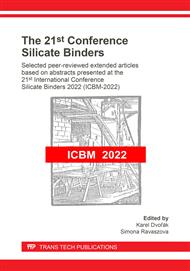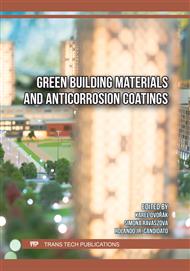p.3
p.9
p.15
p.21
p.27
p.33
p.41
p.47
Use of Alternative Raw Materials for the Production of Fiber Cement Products
Abstract:
The paper deals with the production of fiber cement and the use of alternative raw materials in its production. The paper describes the basic technologies used for the production of fiber cement with a description of their advantages and disadvantages for the given type of product. The paper also describes the most commonly used types of fillers and their impact on the final fiber cement products. The paper also describes selected alternative raw materials used for the production of fiber cement and their impact on the final products. The paper describes the possible use of waste dust from facade fiber cement boards in the production of corrugated sheets. Trial recipes were designed with partial replacement of original raw materials with waste dust. The fiber-cement corrugated sheets were produced with using Hatchesk technology. Mainly was investigated the influence of the addition of waste dust on the strength characteristics and the volume weight of the final products. The produced sheets were tested according to EN 494+A1: 2016 Fibre-cement profiled sheets and fittings - Product specification and test methods. The tested samples with waste dust reached comparable results like sheets produced according to standard recipe. No negative effect was proven of the addition of waste dust on the strength characteristics of final products.
Info:
Periodical:
Pages:
3-8
Citation:
Online since:
October 2023
Authors:
Price:
Сopyright:
© 2023 Trans Tech Publications Ltd. All Rights Reserved
Share:
Citation:



